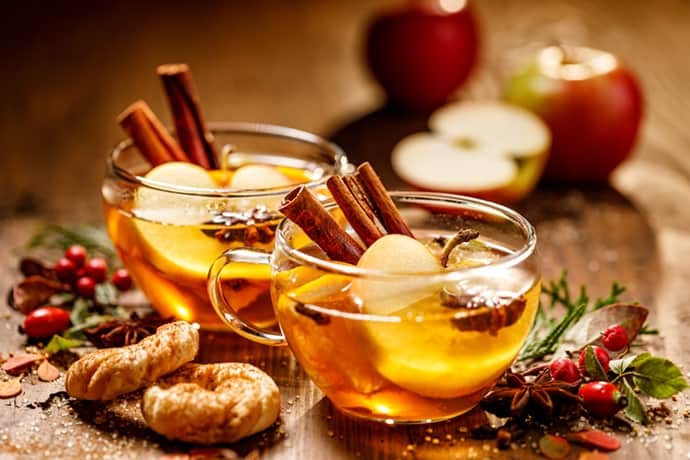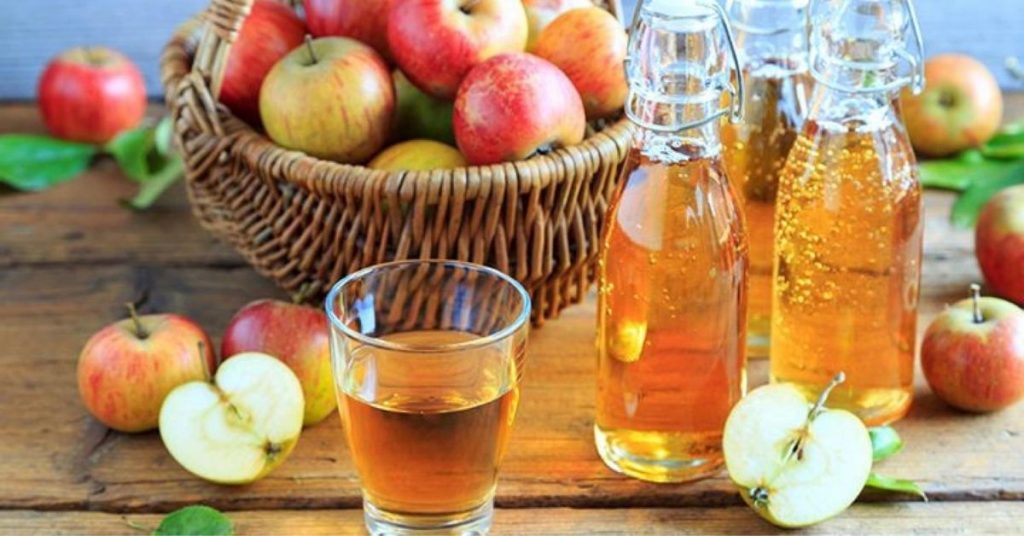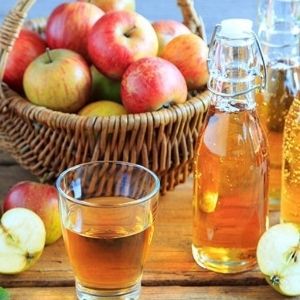
Introduction to apple wine
Apple wine recipe is one of the most famous of all wines and it can also be called apple cider. Making high-quality hard apple cider is actually very easy while making high-quality alcoholic cider from fermented apples is very difficult.
True hard apple cider depends entirely on blending the right types of apples, carefully selecting them, and then mixing them with just enough sugar, tannin, and an acid to produce a perfectly balanced hard apple cider. There are several benefits of an apple wine recipe, which we will discuss in this article.
Delving into the realm of apple wine, also commonly referred to as apple cider, unveils a distinctive journey within the vast landscape of winemaking. While crafting high-quality hard apple cider proves to be a straightforward process, the artistry lies in transforming fermented apples into refined alcoholic cider, presenting a unique set of challenges and complexities.
The heart of true hard apple cider lies in the meticulous process of blending the right apple varieties. Each apple contributes its distinct flavor profile, and the careful selection and combination of these varieties are paramount. This intricate dance involves marrying the apples with just the right amount of sugar, tannin, and acid to orchestrate a symphony of flavors, resulting in a perfectly balanced hard apple cider.
Recommendations
In the context of apple wine recipes, the significance of primary fermentation cannot be overstated. During this crucial stage, the crushed apples yield their precious fruit juice, the foundational element for any fruit wine. The addition of a crushed Campden tablet during primary fermentation serves as a guardian, curbing unwanted microbial activity and fostering a clean and controlled environment for the transformative process.
Temperature plays a pivotal role in nurturing the apple wine's potential during primary fermentation. Allowing the crushed apples and their extracted juice to ferment at room temperature encourages the development of nuanced and complex flavors, a testament to the delicate interplay of nature's elements.
As the apple wine evolves, the strategic addition of sugar becomes a nuanced decision, offering winemakers the opportunity to tailor the sweetness level to their preferences. To safeguard the integrity of the final product, the incorporation of potassium sorbate becomes essential in the later stages, preventing any untoward refermentation and ensuring stability.
Distinct from the rich hues of red wine, apple wine embodies a spectrum of flavors and characteristics unique to fruit wines without using pectic enzymes. The meticulous process of crafting apple wine involves balancing diverse elements to create a libation that transcends simplicity. Whether relished fresh or aged, apple wine stands as a testament to the intricacies inherent in the captivating world of fruit wines, offering enthusiasts a delightful journey through orchard-fresh nuances and exquisite blends.
Apple Wine Recipe With Fresh Apples
Ingredients
- 5 Gallons of Apple Juice
- 5 lbs. of sugar
- 2 tbsp. Yeast Nutrient
- 2 tsp. lemon juice
- 1 Packet of Wine Yeast: EC-1118
- 10 Campden Tablets (5 prior to fermentation and 5 at bottling time)
- Optional: one big cinnamon, 3 cardamoms, 10 cloves to enhance the flavor and taste.
Directions
Drain the apple juice into a plastic or glass jar with enough space for primary fermentation. Then, stir the apple juice, add sugar, the yeast nutrient, and the lemon juice to acidify. Maintain at room temperature.
Pulverize 5 Campden tablets (potassium or sodium metabisulfite), then add this to the mixture, and cover the fermenter with a thin, clean towel. Wait 24 hours. This step incorporating crushed Campden tablets helps to prepare the liquid for fermentation and kills bacteria or other nocive microorganisms.
Sprinkle the wine yeast (EC-1118) over the surface of the juice and stir gently. Close the fermenter and install an airlock on the top to evacuate the carbon dioxide. Allow this must to ferment for 5-8 days.
After 5 to 7 days siphon the wine into a carboy to separate the sediment. Then attach an airlock and let the secondary fermentation occur for 4-6 weeks. Here you can add cinnamon, cardamom, or cloves as an optional. Verify the SG with and hydrometer regularly. The wine hydrometer should read between 0.99.
Once the wine has cleared completely, siphon it off of the sediment again. Stir in 5 Campden Tables that have been crushed and then bottle.
Enjoy your apple wine, and share some insights with us!
Benefits of apple wine

High nutritional value
The first benefit of an Apple wine recipe is that it has high nutritional value. When you make an Apple cider, you take advantage of all the vitamins and minerals found in the apples, plus some other ingredients like water and yeast.
You can take advantage of all these nutrients when making an Apple cider, which is great news especially if you are a health-conscious person. Besides, Apple cider is also very rich in fiber, so consuming it helps you lose weight because it promotes digestive functions.
Antioxidants
The second benefit of an Apple wine recipe is that it contains a lot of antioxidants. In fact, the fruits have high levels of polyphenols and flavonoids, which are powerful antioxidants. Therefore, including an apple in your daily diet will help you prevent diseases and maintain good health. This means that including apples in your everyday diet, even if you are not planning to make an Apple cider, can be very beneficial. Plus, making wine out of apples is really simple; so if you are interested in trying it, you can go ahead and try it at home.
Contains Tannins
The third benefit of an Apple wine recipe is that it contains a large amount of tannins. If you were to look at the content of tannins in pure water, you would find only around two percent. But, in an Apple wine, you can find up to ten percent. Therefore, you can understand that the content of tannins found in this drink makes the apples very special.
If you add a bit of honey, the Apple cider can become sweeter; thus giving you more pleasure while drinking it.
Natural sugars
Last but not least, another benefit of Apple cider is that it contains a good amount of sugar. You might not think that an Apple cider with such a high amount of sugar could be healthy for you. However, the sugar serves as a natural agitating agent that hastens the ripening of the apples; without resulting in serious drawbacks like that of hard cider or other kinds of white wines. Therefore, it is well worth including sugar in your Apple wine recipe.
One more factor that you need to consider when making an Apple cider is the bottling. You need to make sure that there will be no runny or mess when you are filling the bottles. When you are bottling apple wine, you have to ensure that all the liquid is within the bottle. Buy a good quality cork, and follow the instructions on the main page of this site.
Homemade Apple Wine
This simple apple wine recipe will surprise your family and friends. You will discover how making apple wine becomes a relief in your everyday routine. This step-by-step guide ensures that making apple wine becomes a refreshing experience in your daily routine. Surprise yourself by following the easy apple wine recipes with the exquisite flavors of your homemade apple wine recipe, and elevate your winemaking skills with our exclusive 5 gallon apple wine recipe. Cheers to the joy of crafting your very own batch of homemade apple wine! 🍏🍷 #HomemadeAppleWine #HomemadeWineRecipe #5GallonAppleWine





 Based on 7 Review(s)
Based on 7 Review(s)

